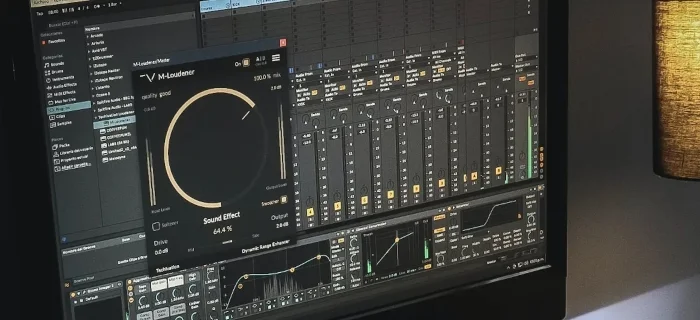When you decide to build a recording studio, perhaps the first challenge you come across is to choose an audio interface.
If you don’t know many things about them, it will be more difficult but even if you know a thing or two, it still can be challenging.
Also, because there is a countless number of audio interfaces to choose from, this makes the decision even harder.
And that’s because I created this little guide that will help you to choose the right audio interface to start building your home recording studio.
What To Consider When Choosing An Audio Interface
Here are some of the most important things to consider for how to choose an audio interface.
1. Inputs And Outputs

You may not know what an audio interface is, but remember that the first and very important thing to consider when choosing an audio interface is I/O – what inputs and outputs it offers.
Inputs and outputs are for instruments, microphones, headphones, and studio monitors. So, the more I/O options it offers the better it is.
Depending on the audio interface, it might have very few I/O but if it’s more expensive, it will offer more options.
In general, you can find a decent amount of I/O even in the best audio interface under 500. And audio interfaces in this price range are perfect for home recording studios.
Make sure that it has at least one instrument and one mic input to be able to record vocals and also outputs for headphones and studio monitors.
2. Phantom Power
The next important thing to consider is the phantom power which is critical if you want to record with condenser microphones.
Phantom power is required for microphones that operate on active electronic circuits and condenser mics are that type of microphones.
If an audio interface doesn’t have a phantom power switch but has an input for a microphone, then you can use only dynamic mics.
Of course, for many home recording studios dynamic mic could be enough but condenser mics are great to record vocals or use it as an additional sound source for instruments.
So, having an audio interface with a phantom power option is recommended for versatility that will help you to create better and more diverse tracks.
3. Features

Also, pay attention to the overall features of a USB audio interface because they might come in handy during recording.
And the features can be anything other than what’s listed above. Something additional that can be used to your advantage.
For example, It might have different controls for volume and gain, features for monitoring, audio meters to control clipping, and so on.
Also, some audio interfaces may offer MIDI input where you can connect a MIDI keyboard or other MIDI instrument.
In a nutshell, the more additional feature an audio interface offers, the more benefits you get.
4. Audio Quality
When searching for audio interfaces to buy, pay attention to the audio quality it offers because if the quality of recorded audio is not good, other features and options don’t matter.
Most audio interfaces today have good audio quality and are more expensive once offer better quality but make sure that it has at least 24-bit and 192kHz options.
This means that you can record very high-quality instrument and mic sounds at your home studio.
Of course, don’t forget to set the correct audio settings when you plug your audio interface into your preferred digital audio workstation.
Because you might use one of the best DAWs but if the settings are not correct, the quality of audio won’t be good.
5. Software

And last but not least is that if it comes with some recording software or plugins because you might get a good deal in that way.
For example, you may come across the best home recording studio package for beginners that contains an audio interface, studio monitors, and other gear and that’s awesome.
But the audio interface can also include some plugins or DAWs for free. For example, UA Volt 276 comes with Ableton Live Lite, UJAM bundle, and cool guitar amp software and it’s free.
So, you might save some money on plugins and other software if the audio interface you choose includes them.
Conclusion
Choosing an audio interface might be challenging if you don’t know many things about it and for that matter, I have created this beginner’s guide for you. Consider everything while choosing an audio interface and you will find the best option easier.
